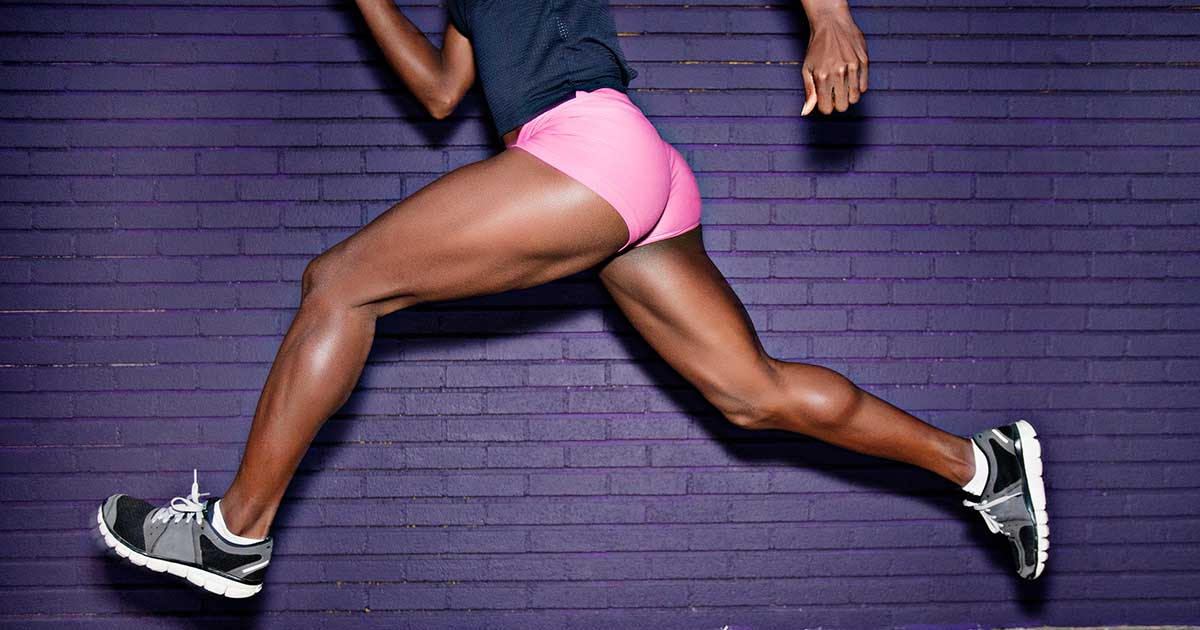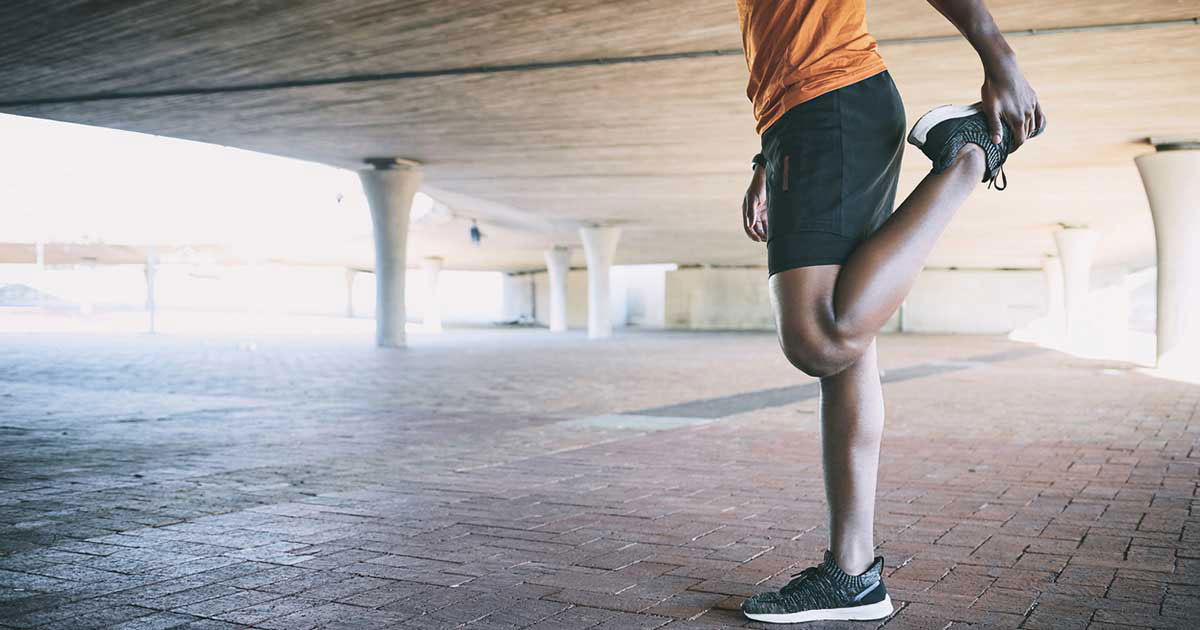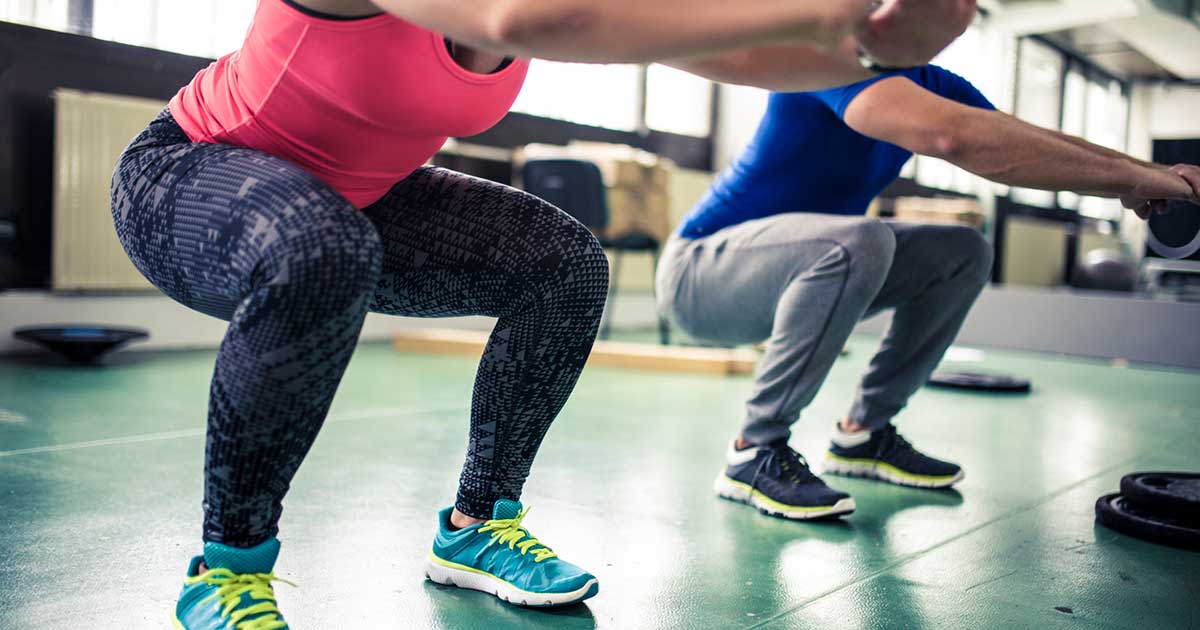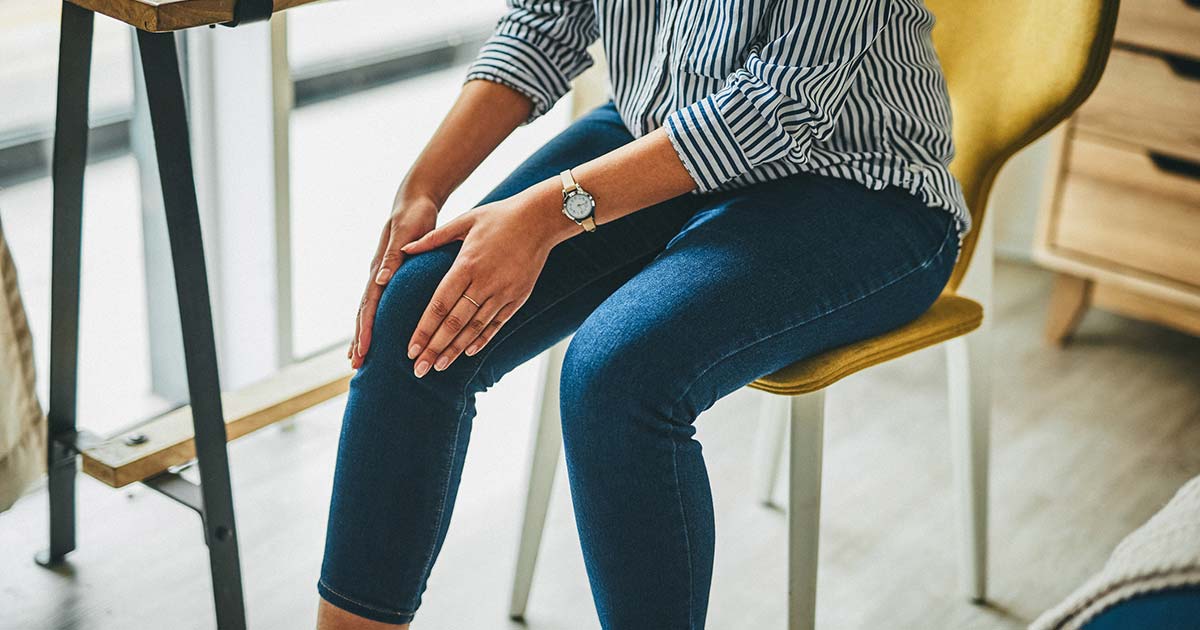A Guide to Your Leg Muscles, from the Ground Up
Advice to improve your movement, fitness, and overall health from the world's #1 in orthopedics.
From stepping up onto a curb to performing a lateral lunge, a broad range of movements depend on the leg muscles—more than 15 in each leg. So how do they all work together to keep you moving? HSS physical therapist Molly Frankinburger, DPT, OCS, CSOMT, CSCS, RRS, of HSS Hudson Yards Rehabilitation, takes us on a deep dive into the muscles of the legs. You can read more in our series on the largest and most critical skeletal muscles in the body here.

Skeletal muscles—those attached to your bones by tendons—make up about a third of the human body. They are voluntary muscles, which means you consciously control how they work, and perform a range of functions and movements throughout the body. (This makes them distinct from smooth muscles, which are involuntary, and cardiac muscles, which are specific to the heart.)
There are some 650 skeletal muscles given Latin names according to their location, size and shape, and action. The flexor hallucis (“of the big toe”) longus muscle, for instance, is the long muscle that flexes the big toe.
The muscles of the upper leg
The upper leg contains large skeletal muscles that generate force and are important for posture and maintaining the stability of the pelvis, Frankinburger says. The main skeletal muscles of the upper leg are:
- Gluteus maximus. You’re probably familiar with this one. It’s the largest muscle in the upper leg, located at the back of the hip, in the glutes (your butt). One of the strongest muscles in the body, the gluteus maximus can generate a large amount of force. It controls motion at the pelvis and plays a role in maintaining posture. It’s one of the muscles you use to climb a flight of stairs or to go rock climbing, for example.
- Gluteus medius. Also located at the hip, just above the gluteus maximus, the gluteus medius helps with stability of the pelvis and hip abduction, which is the side movement of the leg away from the body. The gluteus medius prevents the opposite side of the pelvis from drooping during walking and running.
- Iliopsoas. This is a combined term for two of the largest hip flexor muscles, the psoas and the iliacus. Both are connected to the thigh bone, with the psoas originating at the low back and the iliacus on the inside of the pelvis. These muscles help with posture and engage every time we take a step forward. The iliopsoas is known for being a tight muscle from sedentary lifestyles.
- Rectus femoris, vastus lateralis, vastus medialis, and vastus intermedius. These four muscles make up what is commonly known as the quadriceps (quad equals four) and are located on the front of the leg. They attach to the patella (kneecap) and the tibia (shin) bones and work together to straighten the knee in activities such as kicking, jumping, squatting, and cycling.
- Semitendinosus, semimembranosus, and biceps femoris. The three muscles of the hamstrings, in the back of the leg, bend your knees and move your hips backward and are important for decelerating (slowing down) when running. Hamstrings are also particularly prone to strains and tendonitis.
The muscles of the lower leg
While the upper leg is the powerhouse, the lower leg is responsible for stability of the ankle and foot, Frankinburger says. The main skeletal muscles of the lower leg are:
- Tibialis anterior. Located on the outside of the shin bone, the tibialis anterior is the main muscle used to raise the front of your foot upward toward your shin. It also controls the lowering of your foot to the floor during walking. Paralysis or weakness in this muscle can lead to foot drop.
- Gastrocnemius and soleus. These calf muscles, on the back of the leg, both link into the Achilles tendon, the body’s strongest tendon, which can withstand a force up to 10 times your body weight. The gastrocnemius is a powerful calf muscle that works with the hamstrings to bend the knee and propel us forward when walking, running, and jumping. Located behind it is the soleus, which controls plantar flexing your foot, such as when pressing on the gas pedal while driving. The soleus is important for good posture to prevent us from falling forward.
- Posterior tibialis. Situated deep in the lower leg, the posterior tibialis is an important but often forgotten muscle that is key to stabilizing the arch of the foot. Posterior tibialis tendon dysfunction is a common cause of acquired flat foot deformity.
Avoiding injuries to muscles in the legs
Many of the skeletal muscles of the leg work in synergy, Frankinburger says, meaning they coordinate with each other to create movement. The rectus femoris is a quadricep muscle, for instance, but also helps the hip to move. Likewise, the gastrocnemius is a calf muscle that also helps the hamstrings bend the knee. “If there’s a deficit or weakness in one of these muscles, the synergy can become off balance, which can cause injuries to other areas,” she says.
Muscles are made up of fibers that can get stretched or torn. When a muscle is overused—whether by too much repetitive movement or too much force or resistance—it’s prone to straining. A muscle strain, commonly called a “pulled muscle,” is categorized by how much the muscle stretches or tears. The three grades of muscle strains are:
- Grade 1 (mild)—A small number of muscle fibers have torn, causing pain and tenderness the day after exercise.
- Grade 2 (moderate)—About half of the muscle fibers are torn, causing significant pain and swelling with weakness after activity.
- Grade 3 (severe)—The complete rupture of the muscle, causing severe pain and swelling with complete loss of strength.
When to see a doctor for a muscle strain
You can treat a mild muscle strain at home. If you felt a severe popping sensation or heard a popping noise when the muscle strain occurred, that’s a sign you should see a doctor. Also contact your doctor if you have significant pain or do not see improvement in your symptoms after 2 to 3 weeks.
Why it’s important to stretch and strengthen leg muscles
Regular stretching and strengthening of your leg muscles can help prevent overuse injuries. “You don’t have to belong to a fancy gym or have expensive equipment at home to exercise your legs,” Frankinburger says.
Exercises to stretch and strengthen the muscles of the upper and lower leg are meant to keep these muscles flexible and strong, which is needed for good movement, balance and bone health. Improving balance will make any athlete perform better and becomes even more important to prevent falls at an older age. Exercising to keep your bones healthy is also crucial, whether it’s to keep playing sports at a high level or just continuing long walks with the dog.
Four Simple At-Home Leg Stretches
These four simple leg stretches are ideal to do at home, either before activity or just as a way to start your day.
Hip Flexor Stretch
- Stand with one leg in front of the other, like you are about to do a lunge.
- With your pelvis square and facing front, transfer your body weight to your front leg while pushing your pelvis forward. Your front knee should be at a 45-degree angle and your back knee straight.
- You should feel a stretch in the hip flexor (front of the hip) in the back leg.
Hamstring Stretch
- Lie on your back with your knees bent and your feet flat on the floor.
- Holding a strap in your hands, lift one foot and loop the strap around the ball of that foot.
- Pull on the strap so the knee is straight, raising the leg in the air to feel the stretch in the back of the thigh.
Quadricep Stretch
- Lie on your stomach with your legs bent.
- With a strap around the top of one foot, gently use the strap to pull that leg closer to your bottom. (This stretch can also be done standing with support.)
Calf Stretch
- Stand facing a wall with your legs staggered in front of you and your palms pressed into the wall, with your elbows straight.
- Push the heel of the rear foot into the floor with a straight leg. Keep your front leg bent and use the wall for support.
- You should feel a stretch in the calf of your back leg.
Four Simple At-Home Leg Exercises
These moves target the whole leg to increase your strength and improve your balance.
Bridge
- Lie on your back with your knees bent and your feet flat on the floor.
- Lift your hips up to form a straight line with your body. Hold the position, then lower your hips back down to the floor.
- Once you master the basic version, variations to this exercise include single-leg bridges and marching while holding the bridge position.
Squat
- Stand with your feet hip-width apart.
- Lower your hips until your legs are parallel with the floor, like you’re sitting in a chair.
- Raise back up to standing.
To make this exercise more intense, try jumping into a squat position or counting to five as you descend into a squat. Another variation is a side step into a squat.
Lunge
- Stagger your feet, one in front of the other.
- Lower your back knee toward the floor so that your front leg is at a 90-degree angle with the ground, then raise back up. This is a forward lunge.
- To advance the exercise, try a reverse lunge or a side lunge.
Calf raise
- Stand with your feet hip-width apart.
- Raise up onto the balls of your feet and hold. Slowly lower down so your feet are back on the floor.
- Once you’ve mastered regular calf raises, progress by trying a single-leg calf raise.
Published 2/8/2024





